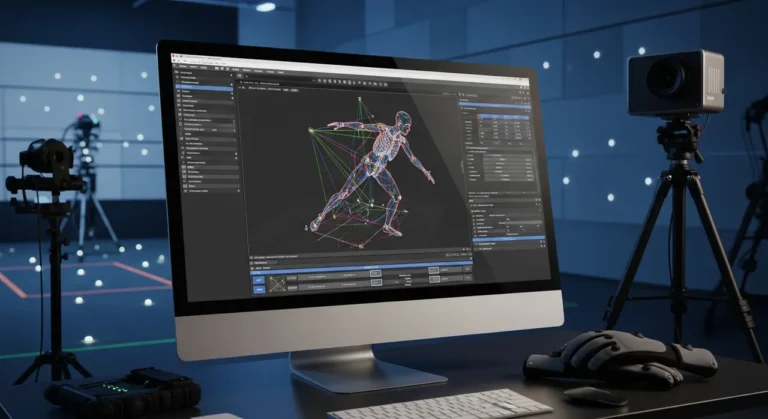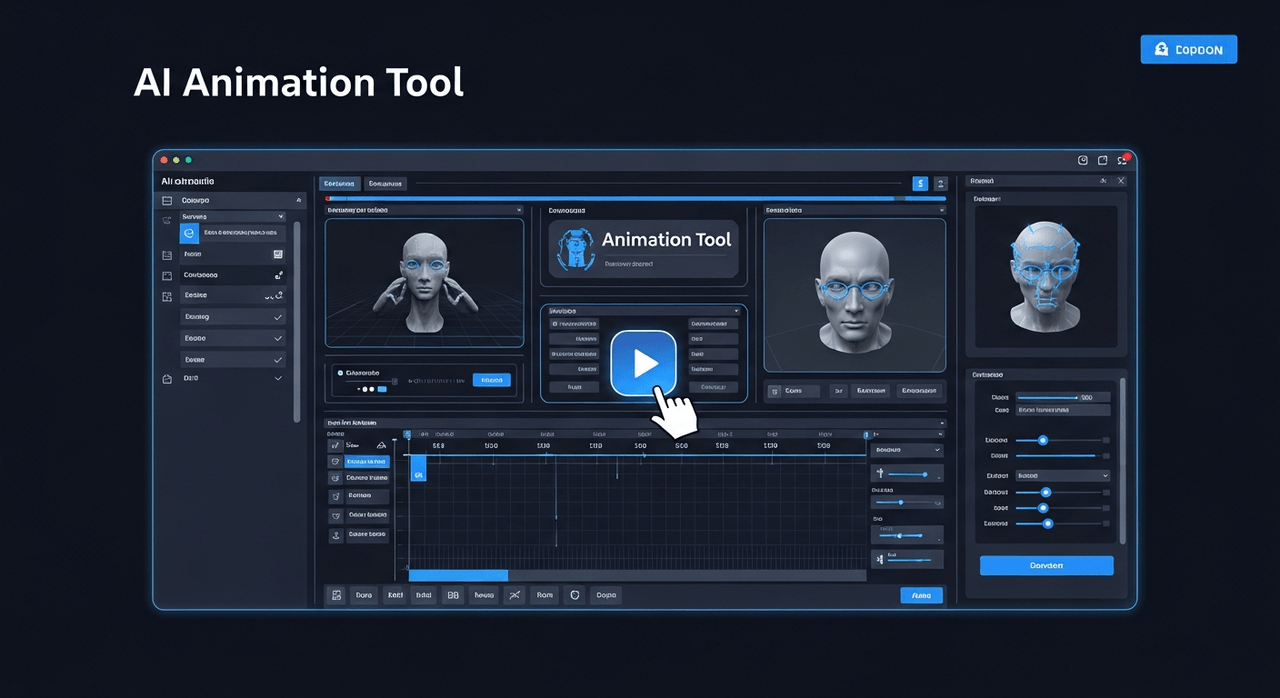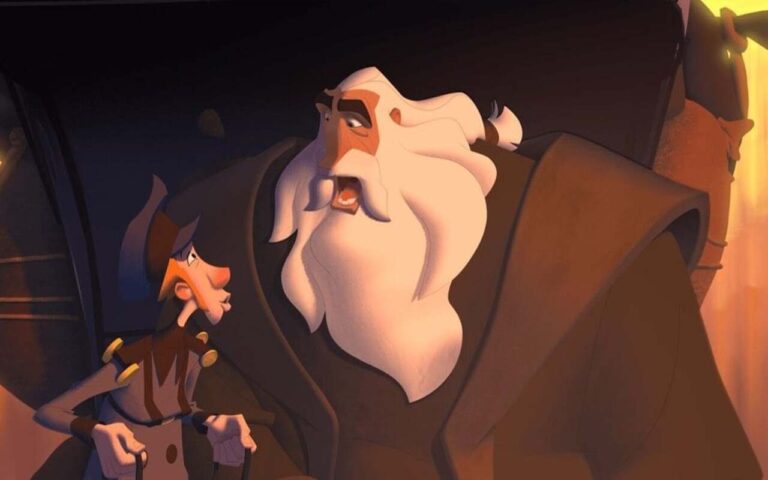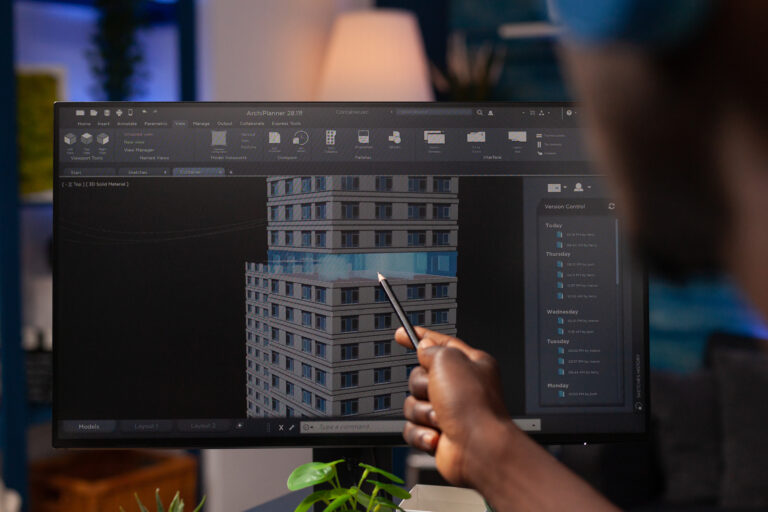Slow in and slow out, also known as ease-in and ease-out, is a fundamental animation principle that adds realism to motion. In the world of animation, few techniques bring a scene to life quite, like slow in and slow out. This staple of traditional hand-drawn animation relies on the simple principle that objects gradually accelerate and decelerate when moving rather than maintaining a constant speed.
By embracing this fundamental law of physics, animators can create natural, lifelike motion that draws the viewer into a believable world. Let’s take a closer look at what slow in and slow out is, why it’s so effective, and how to implement it properly.
In this article, we will unwrap how animators use slow in and slow out to produce high-quality cycles or interactions between characters, how this technique has changed animation, plus the pros and cons of using such technique.

Need Animation Services?
Visit our Animation Service page to see how we can help bring your ideas to life!
What Exactly is Slow In and Slow Out?
As one of the 12 principles of animation, slow in and slow out refers to how animated objects and characters accelerate into and decelerate out of motion. Rather than moving from pose to pose at a steady, constant speed, there is more time spent on the starts and ends of the movement. More frames are dedicated to the slow in and slow out phases, while fewer frames occupy the middle portion where full speed occurs. This technique is used to mimic how movement works in the real world, following the basic principles of inertia, where changes in speed take time.
Once an animator has worked over his/her poses (the “extremes”) and redrawn them until they were the best they could be, the animator naturally wants the audience to see the animations and be appealing to them; he/she timed these key drawings to move quickly from one to the next so that the bulk of the footage of the scene would be either on or close to those extremes, by putting the in-betweens close to each extreme and only one fleeting drawing halfway between, the animator achieved a very spirited result with the character zipping from one attitude to another. This was called slow in and slow out.
For example, if a bouncing ball were to move at a true constant speed, it would seem unnatural and defy gravity. Instead, animators use slow in and slow out to spend more time on the ball, compressing and expanding at the peaks and valleys of the bounce. This adherence to realistic physics is what brings the animation to life. The same is true for a character animation like throwing a punch or taking a step – the limb or body part gradually speeds up and slows back down in a believable way.
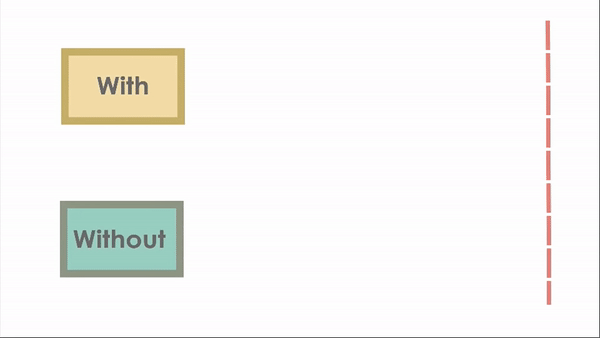
Why Use Slow In and Slow Out for Animation?
There are a number of reasons why skilled animators and character animation companies rely heavily on the slow in and slow out principle to enhance their work. Natural, lifelike motion By mirroring real-world physics, slow in and slow out creates organic movements that feel subtler and more believable.
This verisimilitude draws the viewer into the animated world. Smoother transitions: The gradual acceleration and deceleration create smoothness between poses, avoiding jarring or unnatural jumps between frames. Personality and character Adjusting the timing and spacing of the slow in and slow out phases allows animators to create the illusion of weight, flexibility, and follow-through on movements.
This adds personality and character to both objects and animated characters. Directing focus: Careful use of slow in and slow out guides the viewer’s attention to where the animator intends, enhancing the storytelling. Covers up limitations: The use of additional frames smooths out transitions that may be technically challenging or limited, like between 3D keyframes.
Emotional appeal Dynamic timing with slow in and slow out adds appeal and emotion to a scene, especially with characters’ facial expressions and body language. Clever usage of slow in and slow out transforms animation from a series of technical poses into lively, expressive storytelling full of personality.
Examples of Effective Slow In and Slow Out
Slow in and slow out can be seen extensively in hand-drawn classics from Disney, in CG-animated films from Pixar and Dreamworks, and in video game cutscenes or other digital media. Anytime you see a bouncing ball, an opening door, a moving character, or another object in motion, chances are slow in and slow out are used to make the movement feel more organic.
For example, in the Pixar movie Up, the dog Dug wags his tail rapidly in excitement. The animators used slow in and slow out to build up and ease off the speed of the wagging rather than having the tail snap back and forth unnaturally
In the 2D-animated Lion King, slow in and slow out are used expertly in the character animation, bringing Simba and the other lions to life with their acceleration into leaps, runs, and head turns. Video game cutscenes also rely heavily on slow in and slow out to animate characters in a way that fits the game’s art style while still feeling lifelike.
Wherever fluidity and appeal are priorities in animation, you’re sure to find slow in and slow out enhancing the motions.
Tips for Implementing Slow In and Slow Out
It can take some practice learning to effectively utilize slow-in and slow-out timing in animation. Here are some tips explained in the following section for animators looking to implement believable slow in and slow out:
Use more frames at the beginning and end of a movement to achieve that gradual acceleration or deceleration ramp-up/down effect. Overlap successive motions rather than having each movement end completely before the next begins. This maintains fluid transitions
Adjust timing to fit the size, weight, and personality of the object or character in motion. A boulder accelerating into a roll requires different timing than a hummingbird’s fluttering wings. Study how objects move in real life – observe their ramp up and ramp down of speed to inform your animation. Use animation curves and graph editors to refine the effect and achieve just the right easing pace and overlap you desire.
Mastering slow in and slow out brings animation to the next level. Keep practicing and studying natural physics to get it right.
Pros and Cons of Slow In and Slow Out
While slow in and slow out offers many benefits, there are also some limitations and challenges to keep in mind:
Creates more realistic, natural motion that mimics real-world physics. Allows for greater control over the feel and emotion of a scene. Smoothly directs the viewer’s attention. Adds personality and character to animated characters and objects. Covers up technical limitations by smoothing out transitions between poses.
It can be more time-consuming to implement with added in-between frames. Requires careful planning to utilize properly throughout a scene. Too much slow in and slow out can make the action feel overly exaggerated or floaty. Doesn’t work as well for inorganic motions like vehicles or rigid objects. It can be difficult for new animators to learn to use it effectively.
The key is balance; take advantage of the benefits of slow in and slow out while minimizing the drawbacks. When used with care and purpose, this animation technique breathes life into your scenes.
Conclusion
Animation continues to advance rapidly, with new technologies and techniques expanding the possibilities for animators. Yet some fundamentals remain timeless. The clever usage of slow in and slow out is one of those enduring animation principles that breathe believability and appeal into motion. By thoughtfully applying this technique, animators can make even the most fantastical worlds feel grounded in lifelike physics. From bounce to wind-up to follow through, slow in and slow out enhances the illusion of weight, flexibility, and natural movement.
Whether hand-drawn or CG, 2D or 3D, slow in and slow out helps direct the audience’s focus and draw out a character’s personality. Though it requires diligence and practice to master, this principle persists as an invaluable tool for animators. As Walt Disney himself once said, “The basics are the fundamentals upon which you build. You’ve got to get those down before you can progress.” Slow in and slow out remains one of those essential animation basics. By embracing this fundamental technique, animators can continue creating memorable, expressive characters that feel alive and organic, captivating audiences for generations to come.

